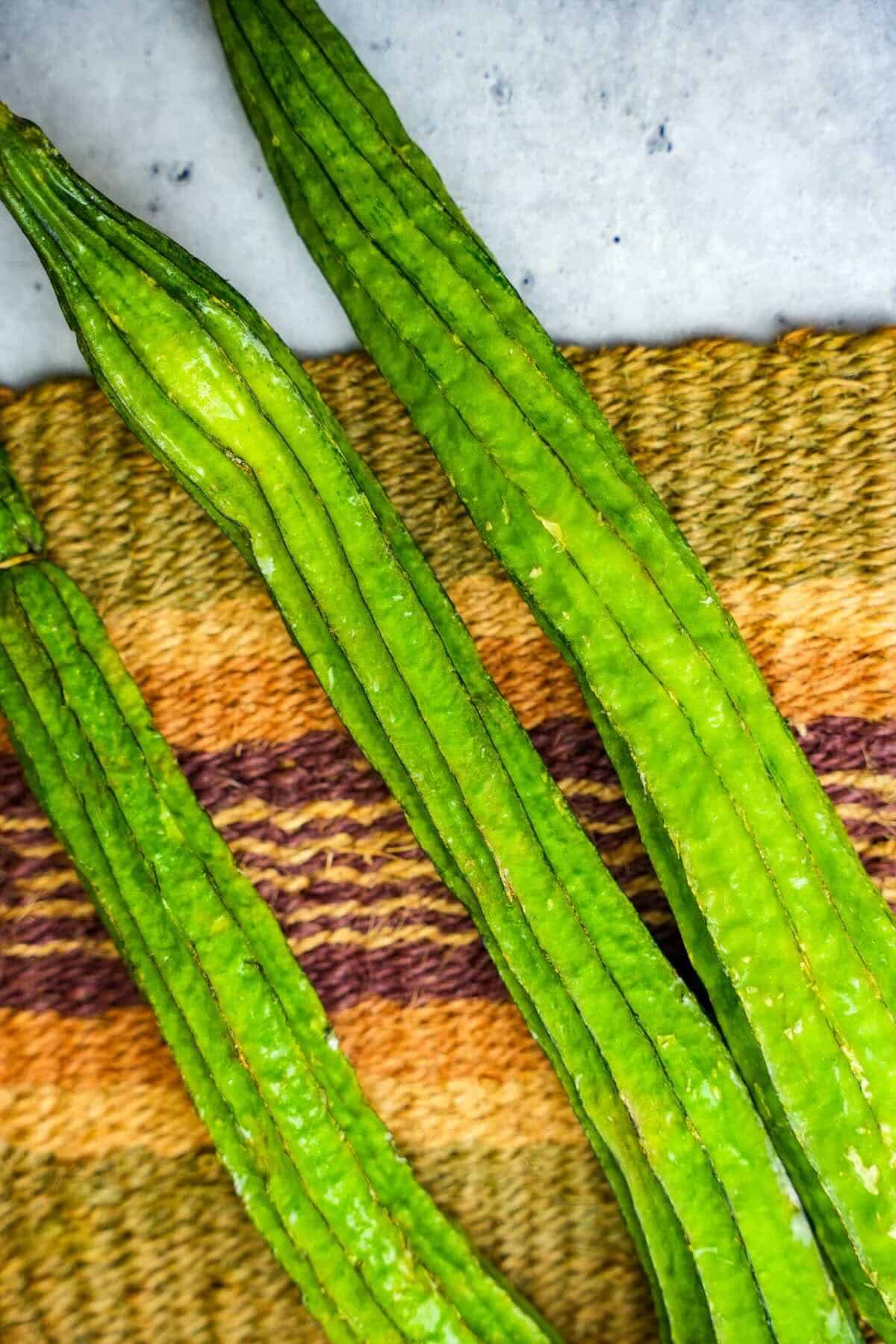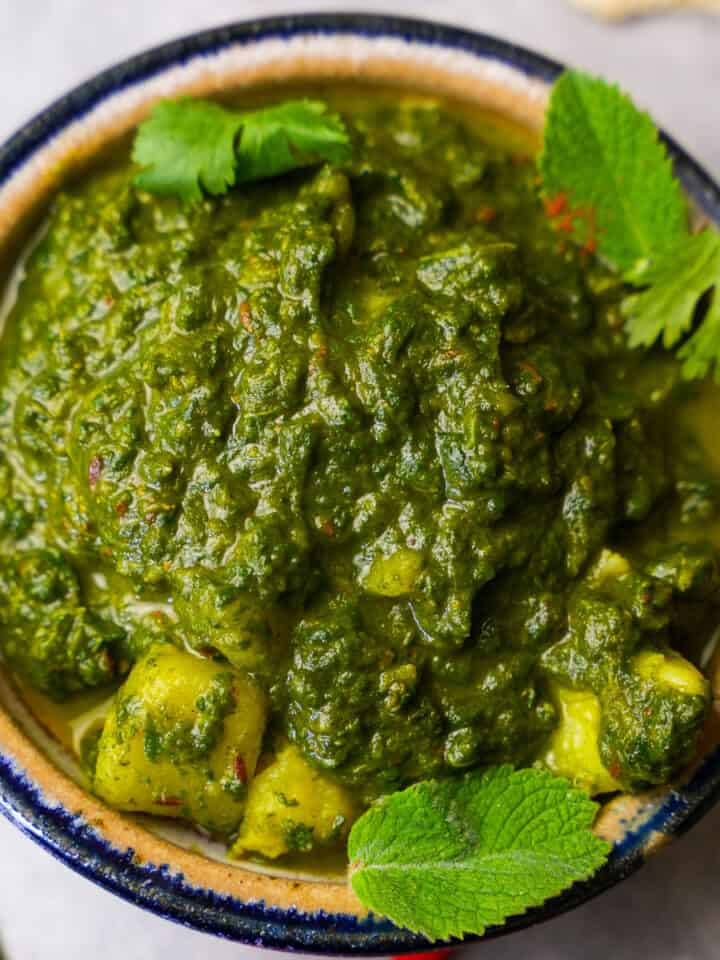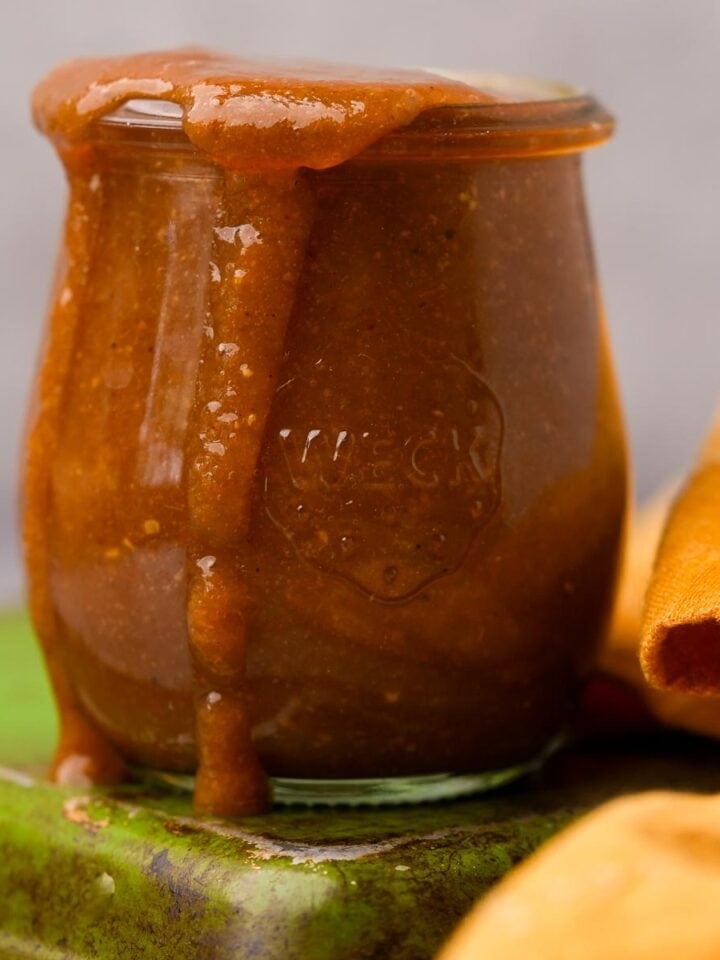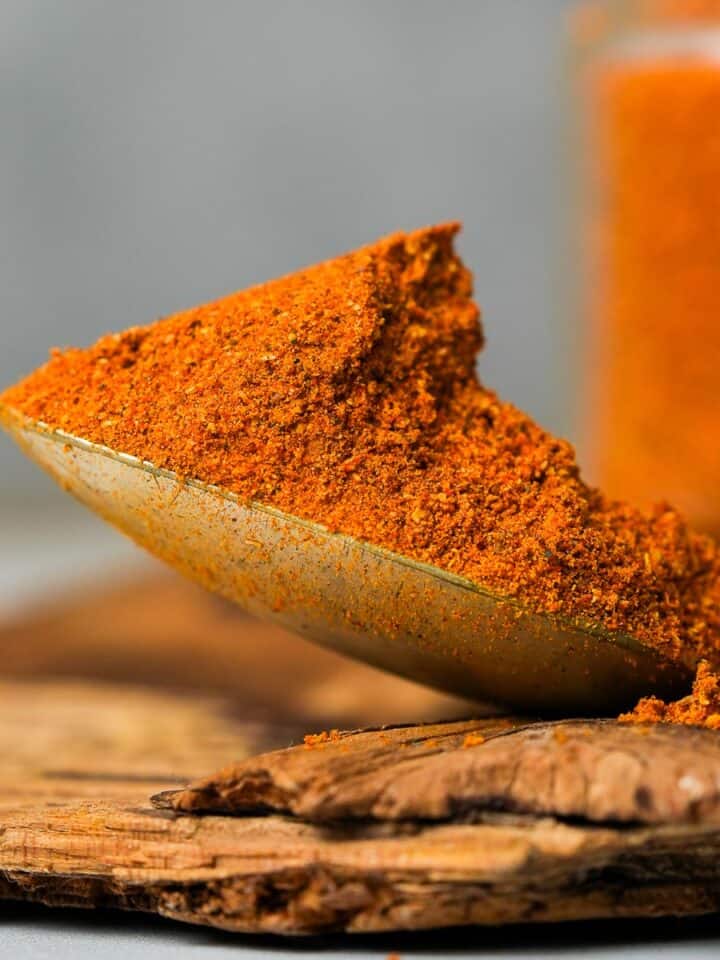*This post may contain affiliate links. Read more »
Out of all the exciting ways you might experiment with cooking ridge gourd, this Beerakaya recipe is about to seriously hook you. And this particular recipe just happens to be completely sattvic, vegan, AND gluten-free too. It’s seriously great for you, low in calories, and a lightening-fast, flavor-forward vegetarian sabji that comes together effortlessly while your rice and dal are steaming away on the back burner.


Enter your email & I'll send it to your inbox. Plus, get great new recipes from me every week!
By submitting this form, you consent to receive emails from Cinnamon Snail.
You’ve basically landed on a site that’s overflowing with insanely well-tested, well-loved Indian gourd recipes. I’ve shared recipes that use bottle gourd, like my lauki sabji recipe, and classic Indian classics that use adorable little pointed gourds (tindora), like my aviyal recipe. But the gourd I am obsessed with, and can’t stop coming up with awesome preparations for, is beerakaya.
Do you keep getting let down by poorly tested recipes on your seemingly endless search for the ultimate ridge gourd sabji recipe? What if I told you that without onions and garlic, this recipe packs wayyyy more flavor than a lot of other ridge gourd recipes, while also being a great option for bhoga offerings? My sattvic recipes (including all the seriously bangin’ prasadam I serve at my Galactic MegaStallion pop ups) have become some of the most popular on the internet. And you are about to find out what’s up with that!
Jump to:
🥰Why you’ll adore this ridge gourd recipe
✊ Vegan AF & GF: Like all of my vegan Indian recipes, this one is made without harming a single lovable animal. It’s not just some hum-drum gluten-free vegan bag of garbage. Nope. It's packed with flavor, and great for your body too!
⏱ Quick and Easy: This recipe comes together in under 20 minutes with just one pot, making it perfect for busy weeknights when you need something nourishing quickly, that doesn’t make a massive mess in your kitchen.
🪷 Fasting Friendly: Looking for ekadasi recipes? This beerakaya koora is made without any grains or legumes in it.
✅ Tested and Approved Worldwide: Like all of the vegan recipes I create, after I had it fine-tuned to be perfect, I shared it with a massive team of recipe testers from all around the world. After they reported back with how much they loved it, and how easy it was to make - only then did I share it on the wild open seas of the internet, where you could find and love it too!


🤘Learn to make flawless prasadam
This guide to my most popular sattvic vegan recipes is 100% FREE, & you'll love the actual heck out of it 🥰
🤷♀️ What is Beerakaya?

Beerakaya, also known as ridge gourd or Chinese okra, is a staple in many South Indian kitchens.
It’s mild in flavor, so it soaks up all the delicious spices you throw its way, making it a base for some very popular dishes throughout India. Peerkangai kootu is another sattvic ridge gourd recipe from Tamil Nadu. If you prefer cooking with onions and garlic, you will love the way you can make Gujarati turai sabzi out of the same gourd.
Beerakaya is rich in dietary fiber, which aids digestion and supports gut health. This gourd is a fantastic source of vitamins A and C, which boost immune function and promote healthy skin. Ridge gourd is also known for its high water content, making it hydrating and beneficial for kidney health.
Beerakaya has been used in traditional Ayurvedic practices to manage conditions like jaundice and diabetes due to its potential to help regulate blood sugar levels. Its antioxidant properties contribute to reducing oxidative stress and inflammation in the body.
This is one of the vegetable curry recipes people always say is good for weight loss. But, that doesn't seem to be the case for me. 🤷♀️ I mean, now that I am vegan, I find myself eating more, because I can enjoy the food more knowing that it's not causing violence to animals. So, add this to the list of great Indian food I love that's causing your boy to chunk up a little bit...
See why is makes 100% more sense to eat a plant-based diet already? Meat and dairy have NONE of that great stuff going for them.
🌶️ Ingredients

Ridge Gourd
Ridge gourd has a subtle, watery flavor that absorbs the spices beautifully, making it a versatile base for this sabji. If ridge gourd is unavailable, ash gourd (like you might make this olan recipe with during Sadhya), or parval, can be used as substitutes. If you live in the west, zucchini or summer squash can also be used in this recipe in place of the ridge gourd.
Cumin Seeds (Jeera)
Cumin seeds add a warm, earthy flavor to this sabji. I’ve tried a zillion different cumin seeds from all around the world, and by a LONG SHOT the slender, hyper-fragrant wild mountain cumin seeds from Burlap and Barrel are my absolute fave.
I use it in everything from arvi sabji, and my toor dal recipe to condiments like tamarind chutney, non-Indian recipes like red curry paste and salsa verde.
Anyway, if you can’t get those wild mountain cumin seeds, you can 100% get away with using regular boring ol’ cumin seeds, or a little more than half the amount of ground cumin in their place.

Get my fave cumin seeds for free!
Using this link, add the wild mountain cumin to your cart, spend at least $15 on some of the other absurdly good spices from Burlap & Barrel (they all seriously slap) and the bottle of this bangin' wild mountain cumin becomes FREE, and you will love it so much.

Kashmiri Red Chili Powder
Kashmiri red chili is the gorgeous, bright red, not-that-hot spice which is essential for achieving the authentic look and taste of many Indian dishes such as aloo tikki chaat, masala makhana, vegan chana masala, and even non-Indian things like my vegan pepperoni recipe. If you can’t get it, a mix of mostly sweet paprika with just a tiny bit of cayenne pepper mixed in will work out in this recipe.
Asafetida (Hing)
This pungent resin, known as "hing" in Hindi, and sometimes spelled asafoetida, is used in small quantities to add a pungent flavor and aid digestion. Since I try to eat a mostly sattvic diet, I use it to replace onions and garlic in a ton of recipes such as masoor dal to sukha kala chana, and for sure I have plenty of it in my achar masala recipe to make instant pickles with.
I prefer powdered asafetida for this recipe because it is much easier to measure accurately than dark-colored blocks of asafetida resin. If you are gluten-free, double-check that the asafetida you use doesn’t contain wheat starch, which is commonly mixed into the powder to prevent it from clumping up.
Dried Kasuri Methi
I am sorta embarrassed to say that I’d been cooking Indian dishes for over 20 years before I started using kasuri methi (sometimes spelled kasoori methi), and it’s seriously a game changing upgrade. Now I use it in everything from my soya chaap, to my seitan chicken based vegan tikka masala recipe. There’s nothing that really has the same flavor, so if you can’t get these dried fenugreek leaves where you live, just leave them out.
Green Chilies
The slender, small hari mirch chilies found at most Indian grocery stores are the traditional choice when it comes to green chilies in Indian cooking. Don’t stress though, m’love. If you can’t get these, you can for sure get away with using some minced jalapeño (to taste) if you can’t get the real deal.
Indian green chilies make for an amazing condiment when used to make coriander chutney, or in my mirch ka achar recipe.
Curry Leaves
Curry leaves are aromatic leaves that add a distinct, slightly citrusy flavor to the sabji. There’s really nothing that makes a great substitute for them, so just leave them out, or perhaps use some fresh bay leaves in their place if you can’t get them.
I can never leave (...see what I did there?) them out of my vegan Malaysian recipes like curry laksa, and I’d hate to make Vietnamese ca ri chay without them either.
It’s a great thing that curry plants can be grown easily as houseplants to keep their fragrant leaves available year-round. Otherwise, if you purchase a whole big bag and can’t use them up quickly, they can be bagged up and frozen, as long as you use them within a few months.
Dried Chilies
Dried red chilies add heat and a smoky flavor to the tadka. My fave are the kinda crumpled looking Byadagi chilies from Karnatica, which I use in my chana dal tadka. Kashmiri chilies are a milder and more colorful option. If you want serious heat you can use Chile de Arbol, which I normally use to bring some straight-up fire to vegan Mexican recipes like salsa macha, adobo sauce, and salsa roja.
Kalonji
Kalonji seeds, or nigella seeds, which I also use in my mango pickle recipe, have a slightly bitter, peppery flavor and add a subtle crunch to the dish. If you don’t see them at your local Indian grocery shop, you can use black sesame seeds or cumin seeds as a substitute.
*See the recipe card at the bottom of the page for exact quantities, nutritional info, and detailed cooking directions.
🤯Variations
Beerakaya Palu Posina Kura
This traditional South Indian variation features ridge gourd cooked in a spicy coconut milk based gravy. It’s no wonder, since in Telugu, "Palu Posina Kura" roughly translates to "dish cooked with milk.” This variation is easy to make by just adding coconut milk to my beerakaya subzi recipe, and adding some additional spices like some of my Madras curry powder, some garam masala, and a little extra minced green chilies.
Beerakaya Pachadi with heerekai chutney
Personally, I just don’t really love the texture of this ridge gourd chutney, but if you are from Kerala in the very southern tip of India, you might really love ridge gourd cooked this way. To make Beerakaya Pachadi, peel and cube the ridge gourd, cook it with salt in a closed pan until soft and water is released, then blend into a smooth paste. Temper mustard seeds in hot oil, sauté onions and curry leaves until golden, mix in the pureed ridge gourd, and heat through before serving warm over coconut rice (like my nasi uduk) with this hyper-flaky parotta recipe.
Andhra Style Ridge Gourd Curry
In Andhra Pradesh, beerakaya usually doesn’t include a tempering (tadka). Instead, Andhra style ridge gourd curry goes heavier on the spices in the sabji itself (often adding some vepudu karam), This traditional version is made with a fair amount of ginger garlic paste in it too.
📖 How to make ridge gourd curry
Nail this sattvic ridge gourd recipe on your first shot by following these step-by-step photos with helpful tips. Or scroll down to the bottom of this page for the easy-to-print recipe card.

Step One
Gourd of the Rings:
Peel the fresh ridge gourd, then cut it into small pieces, around 1-inch (2.5 cm.) in size.
✅If you like, you can save the skins to make ridge gourd skin chutney with.

Step Two
Spice World Tour:
Heat the oil in a large pan or Dutch oven over medium heat. After 90 seconds, when the oil is hot, stir in the mustard seeds and cumin seeds, waiting just a minute or two for them to pop.

Step Three
He who controls the spice controls the universe:
Stir in the Kashmiri red chili powder, turmeric, asafetida, dried kasuri methi, minced green chilies, and curry leaves. Cook for just two minutes, stirring occasionally, until aromatic, but without burning the spice powders.

Step Four
Oh. My. Gourd.
Add the chopped ridge gourd pieces to the pan and give it a good stir, making sure it’s well-coated with the spice mixture.
Then, add the shredded coconut, water, cilantro, and salt, cover the pan, and cook for 10 minutes over low heat until the beerakaya pieces are just tender, but not mushy. Remove the pan from the heat with the lid off.

Step Five
Sweeney Tadka:
While the ridge gourd is cooking, heat oil in a small saucepan over medium-high heat. After 90 seconds, when the oil is hot, add the curry leaves, dried chilies, kalonji seeds, sesame seeds, asafetida, and salt. Stir constantly, cooking for 2 minutes until the seeds are fragrant and slightly toasted.

Step Six
Beerakaya Supplier:
Pour the cooked ridge gourd sabji into a serving dish, then top it with the sizzling tadka. Garnish with fresh coriander leaves and strips of green chili before serving.
💡Serving Ideas
Of course, sabjis like this are awesome over plain rice with dal scooped up with aloo kulcha. My vegan biryani recipe is the mega-deluxe option, but it’s great on top of simpler rice preps like nasi kunyit, and nasi minyak too.
Serve beerakaya alongside some of your favey chaats like kanda bhaji, aloo papri chaat, sweet potato chaat, or bhel puri.
If you want more spice and a healthy boost to digestion, serve it with a side of amla pickle, or gajar achar. And if you are a straight-up-amla-freak like me, make some amla candy to freshen your palate with after the meal.

👉Top tips
- Oil’s Well That Ends Well: Don’t skimp on the oil when cooking the ridge gourd. This veggie tends to release water, so a good amount of oil helps it sauté evenly and develop that rich, deep flavor without turning into a mushy mess.
- Timing Is Everything: The texture of ridge gourd is key—cook it just until tender, but not so long that it loses its form. Overcooking can result in a bland, watery dish, so keep a close eye and test for doneness early.
- Peter Pan: Use a wide, heavy-bottomed pan to allow the ridge gourd pieces to cook evenly without overcrowding. This way, they’ll get a bit of caramelization rather than steaming in their own juices.
🤷♀️ Recipe & Ingredients FAQs
I’d love to tell you yes, because it sure would be convenient, but freezing ridge gourd curries isn’t a great plan. It tends to develop a pretty awful texture when thawed. Just make it and eat it fresh, and you will be so much happier.
To avoid a watery curry, sauté the ridge gourd in a wide enough pan so that most of the gourd has some contact with the cooking surface.
While it’s possible to make ridge gourd without oil, using a small amount of oil helps develop a richer flavor and better texture. If you prefer oil-free cooking, use a non-stick pan and keep a close eye on the cooking process to prevent sticking or burning.
🗄️ Storing Ridge Gourd Curry
Refrigerate leftover ridge gourd curry in an airtight container. It will stay fresh in the refrigerator for up to 4 days.
🔥 Stovetop Reheating
To reheat on the stovetop, place the curry in a pan over medium heat. Stir occasionally and cook until heated through, which should take about 4-5 minutes. Add a splash of water if needed to loosen the curry and prevent sticking.
⚡️ Microwave Reheating
For microwave reheating, transfer the curry to a microwave-safe dish and cover loosely. Heat on high for two to three minutes, stirring halfway through. Ensure it is heated evenly throughout before serving.
✌️My fave Indian recipes to serve with this turai curry:

Beerakaya Sabji Recipe (Sattvic Ridge Gourd Curry)
Equipment
Ingredients
Beerakaya Sabji:
- 400 g. ridge gourd one large gourd
- 1 tablespoon canola oil vegetable oil, or sunflower oil
- 1 teaspoon brown mustard seeds
- ½ teaspoon cumin seeds
- ½ teaspoon Kashmiri red chili powder
- ¼ teaspoon turmeric
- ½ teaspoon asafetida
- ½ teaspoon dried kasuri methi
- 2 green chilies hari mirch, minced
- 12 curry leaves
- 3 tablespoons shredded coconut
- ¼ cup water
- ¾ teaspoon salt
- ½ cup cilantro chopped
Tadka:
- 2 tablespoons canola oil vegetable oil, or sunflower oil
- 16 curry leaves
- 3 dried chilies Byadagi, Kashmiri, or Chile Arbol
- ½ teaspoon kalonji seeds
- 1 teaspoon sesame seeds
- ¼ teaspoon asafetida
- ¼ teaspoon salt
To Garnish (optional):
- Fresh cilantro leaves
- Strips of green chili
Instructions
- Peel the ridge gourd and cut it into small, bite-sized pieces, roughly 1 inch (2 ½ cm.) in size.
- Heat the oil over medium heat in a large pan. After 90 second, when the oil is hot, stir fry the mustard seeds and cumin seeds, allowing them to sizzle and pop for a few seconds.
- Stir in the Kashmiri red chili powder, turmeric, asafetida, dried kasoori methi, minced green chilies, and curry leaves. Stir and cook for just 1-2 minutes until fragrant.
- Add the chopped ridge gourd to the pan and stir to coat it with the spice mixture. Add the shredded coconut, water, cilantro and salt, then cover the pan and cook over very low heat for 7-10 minutes, or until the ridge gourd is just tender.
- To prepare the tadka, heat the oil over medium-high heat in a small pan. After 90 seconds, when the oil is hot, stir in the curry leaves, dried chilies, kalonji seeds, sesame seeds, asafetida, and salt. Cook for 1-2 minutes, stirring continuously until the seeds are fragrant and slightly toasted.
- Transfer the cooked ridge gourd sabji into an attractive serving dish and top it with the tadka. Garnish with fresh cilantro leaves and strips of green chili before serving.
Notes

Enter your email & I'll send it to your inbox. Plus, get great new recipes from me every week!
By submitting this form, you consent to receive emails from Cinnamon Snail.











Terez says
I used zucchini and it was delicious!
Adam Sobel says
Glad you loved it! You can do the same (zucchini hack) with the peerkangai recipe on the blog too.